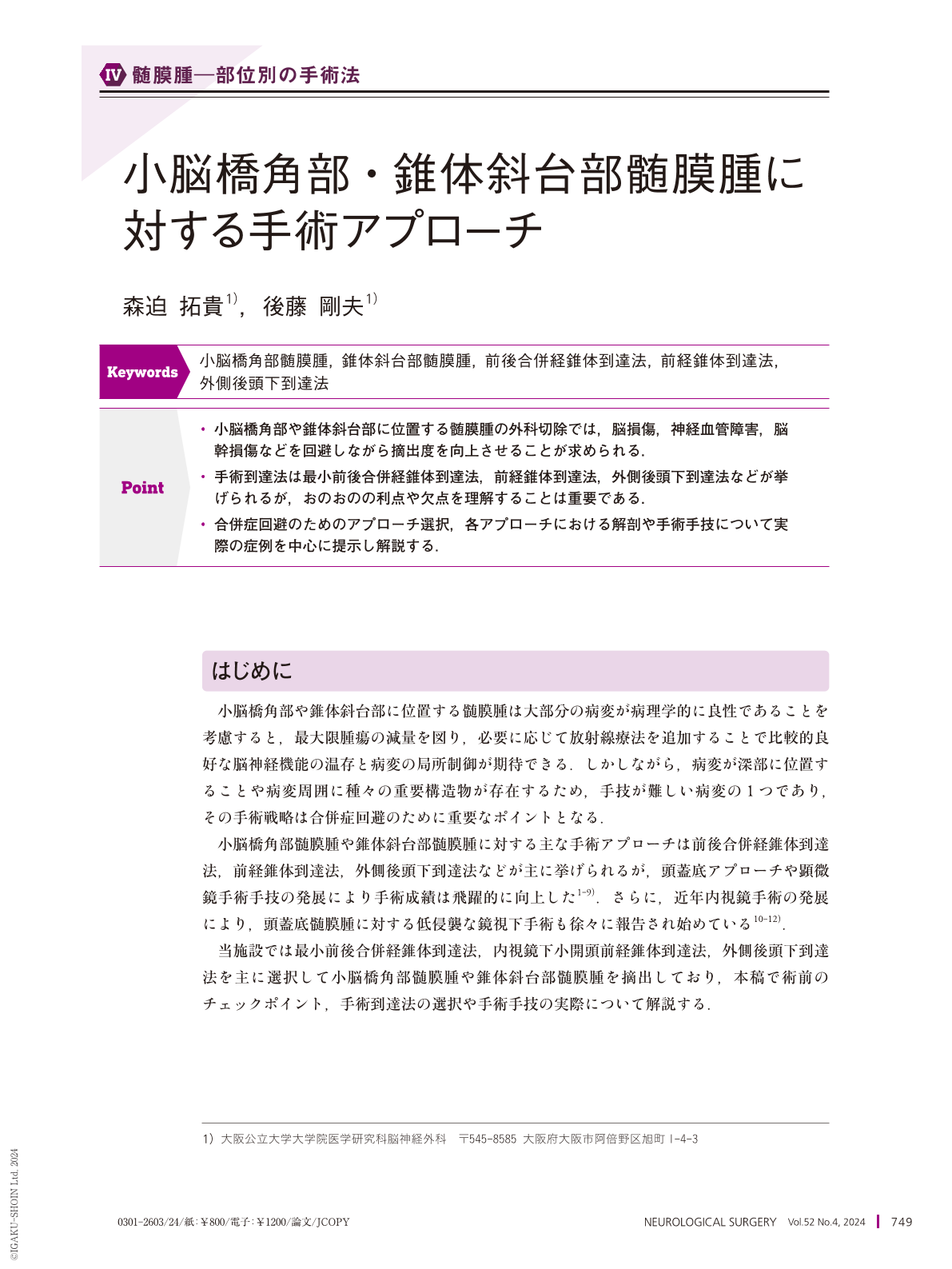Japanese
English
- 有料閲覧
- Abstract 文献概要
- 1ページ目 Look Inside
- 参考文献 Reference
Point
・小脳橋角部や錐体斜台部に位置する髄膜腫の外科切除では,脳損傷,神経血管障害,脳幹損傷などを回避しながら摘出度を向上させることが求められる.
・手術到達法は最小前後合併経錐体到達法,前経錐体到達法,外側後頭下到達法などが挙げられるが,おのおのの利点や欠点を理解することは重要である.
・合併症回避のためのアプローチ選択,各アプローチにおける解剖や手術手技について実際の症例を中心に提示し解説する.
*本論文中、[Video]マークのある図につきましては、関連する動画を見ることができます(公開期間:2027年8月まで)。
Considering that most meningiomas are pathologically benign, tumors located in the cerebellopontine angle and petroclival area should be reduced as much as possible, and radiation therapy should be administered if necessary. Consequently, relatively good preservation of cranial nerve function and local lesion control can be expected. However, because the lesions are generally located deep, and are surrounded by various important structures, performing surgical procedures is difficult, and careful management of the surgical strategy is important to avoid complications.
Surgical outcomes have dramatically improved with the development of skull base and microsurgical techniques. The main surgical approaches for cerebellopontine angle meningiomas and petroclival meningiomas currently include the anterior and posterior combined transpetrosal, anterior transpetrosal, and lateral suboccipital approaches. Furthermore, with the recent developments in endoscopic surgery, minimally invasive surgery for skull base meningiomas has gradually been introduced.
In this article, we explain the preoperative checkpoints, selection of the surgical approach, and surgical techniques for the resection of cerebellopontine angle meningiomas and petroclival meningiomas.

Copyright © 2024, Igaku-Shoin Ltd. All rights reserved.


